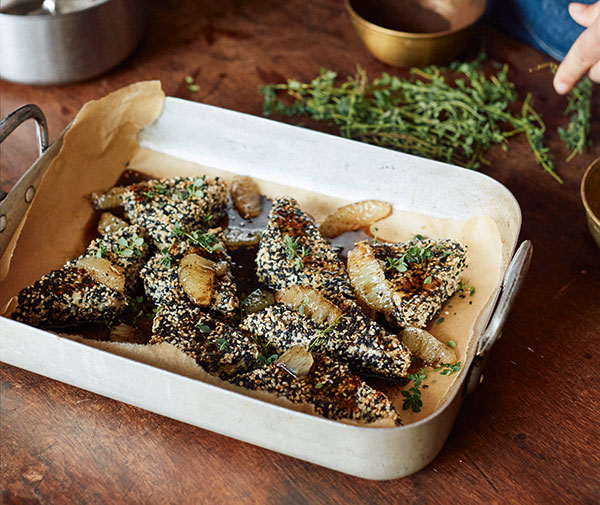Born and raised in Bahrain, to an Arab dad and English mum, I am no stranger to aromatic plates of lamb and rice, chickpeas and yoghurt, mung beans and lentils, and a plethora of spices; black limes very much included.
To those unfamiliar with black limes, or loomi aswad in Arabic, they are limes that have been dried in the sun: bitter, sour, earthy and robust. And they’re in almost every Bahraini dish I know.
Yet as little me sat in the school playground, red lunch box in tow, it was a Marmite sandwich I’d greedily sink my teeth into, its salty, yeasty qualities giving way to a thick lashing of butter, crunchy slices of cucumber, and soft white bread (as a proper Marmite sandwich should be, of course).
“Gross,” said my classmates, “What is that stuff?” They weren’t so convinced. Marmite is as exotic an ingredient to your average Bahraini as black limes are to my Northampton-based gran. In my pantry though, they sit cheerfully side by side, knowing they’ll be used and cherished in equal measure.
My parents say I was born inquisitive and always up for a snack. This inevitably meant parading around the kitchen as mum made her famous Welsh cakes and Victoria sponge, sneakily dipping my fingers into bowls where I could.
But I would also jump at a car ride with my dad, knowing that we’d end up eating piping hot samosas out of oil-stained paper bags, bought for pennies from a street-food vendor.
This amalgamation of East meets West has very much seeped its way into my cooking, with a more Western take on Bahrain’s unique mix of Persian, Arab and Indian flavours. Citizens of the world, myself and so many cross-culture kids find themselves belonging nowhere but everywhere at the same time. In that case, you could say my food style is a little bit Arabic and a little bit English. I like to call it Arab(ish).
Sesame-crusted feta with black lime honey syrup
This dish is a little bit sweet, a lotta bit salty, a tiny bit bitter and a whole bit crispy. It’s exactly what you’d serve for brunch, with bacon, if you like, and not much else, as it really is quite rich.

Ingredients
2 blocks of Greek feta (360g), each cut into 4 triangles (8 triangles in total)
35g rice flour (or plain flour if gluten-free flour isn’t needed)
1 large egg, well beaten
100g mixed black and white
sesame seeds, lightly toasted
2 tbsp olive oil
½ tbsp lemon thyme leaves,
or regular thyme leaves
SYRUP
120g runny honey
1 tsp ground black lime (optional)
3 lemons: 1 juiced to get 1 tbsp, and the other 2 left whole
Method
Line a shallow baking dish with baking parchment.
Pat dry the feta pieces, then dip each piece in the flour, gently shaking off the excess. Coat the egg, followed by the sesame seeds, making sure the feta pieces are completely coated. Transfer each piece to your prepared dish and refrigerate for at least 30 minutes, or longer.
Preheat the oven to 220°C fan. Drizzle the coated feta pieces with the oil and bake from cold, for 18 minutes, very gently flipping the pieces over halfway, or until golden and warmed through.
While the feta is baking, put the honey and black lime, if using, into a small saucepan on a medium-high heat. Once it starts to bubble, turn the heat to medium and cook, stirring occasionally, until it turns a deep amber caramel, about 6–7 minutes. Take off the heat and stir in the lemon juice. Set aside to cool for 5 minutes.
Use a small, sharp knife to peel and segment the remaining two lemons and stir the segments into the cooled honey mixture.
When ready, pour the lemon syrup directly over the feta in the baking dish, sprinkle with the thyme and serve at once, straight from the dish.
Ottolenghi Test Kitchen: Shelf Love by Noor Murad and Yotam Ottolenghi (£25, Ebury Press) is out now.
This article was originally published in the Wicked Leeks spring-summer print edition. You can read the full magazine for free on Issuu.















0 Comments